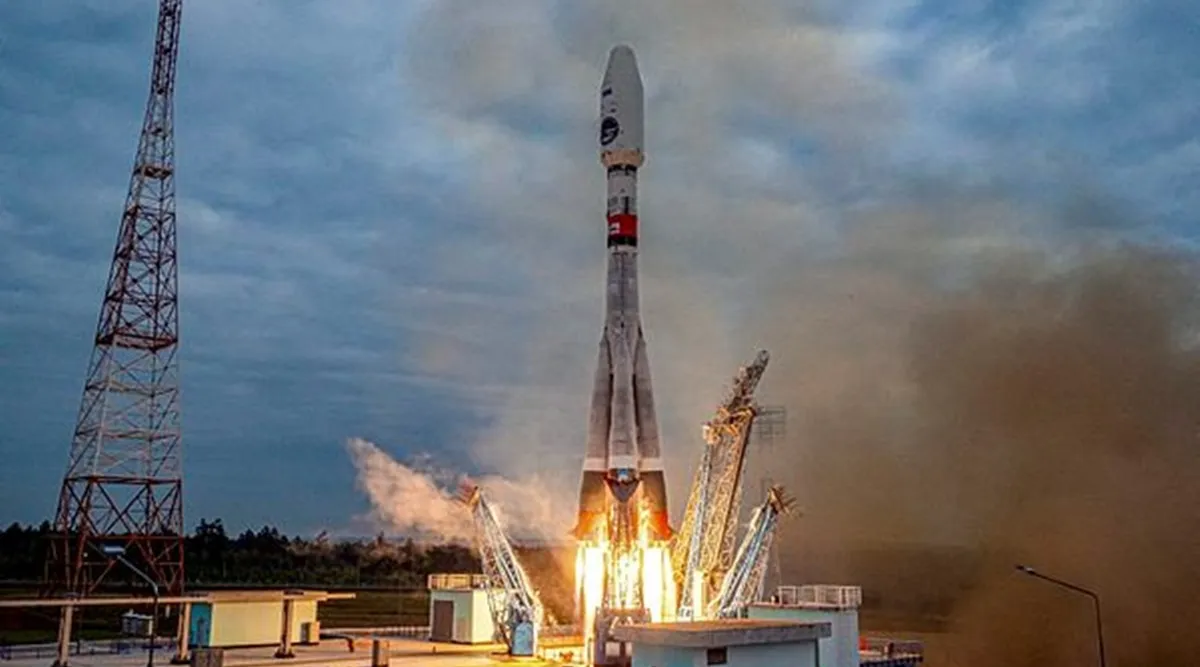
Russia’s Luna-25 spacecraft spun out of control and crashed into the moon after a glitch while preparing for pre-landing orbit, highlighting the post-Soviet downfall of a once-mighty space enterprise. Roskosmos, Russia’s official space corporation, said it lost touch with the craft on Saturday at 11:57 GMT due to a glitch as the craft was shoved into pre-landing orbit. Monday was supposed to be an easy landing. “The apparatus moved into an unpredictable orbit and ceased to exist as a result of a collision with the surface of the Moon,” Roskosmos said in a statement.
It stated that a special inter-departmental panel had been constituted to investigate the causes of the loss of the Luna-25 craft, whose mission had sparked hopes in Moscow that Russia was resuming its role as a major player in the moon race. The loss highlighted Russia’s collapse in space power since the golden days of Cold War competition, when Moscow was the first to launch a satellite into orbit, Sputnik 1, in 1957, and Soviet cosmonaut Yuri Gagarin became the first man in space in 1961. It also comes at a time when Russia’s $2 trillion economy is facing its most significant external challenge in decades: the weight of both Western sanctions and fighting Europe’s largest land war since World War II.
Russia had not tried a moon trip since Luna-24 in 1976
Though lunar missions are notoriously difficult, and several US and Soviet attempts have failed, Russia had not tried a moon trip since Luna-24 in 1976, when Communist leader Leonid Brezhnev governed the Kremlin. The Russian state television ranked the loss of Luna-25 eighth in its news lineup at noon and gave it only 26 seconds of coverage. Russia has been racing against India, whose Chandrayaan-3 spacecraft is set to land on the moon’s south pole this week, as well as China and the United States, both of which have advanced lunar goals.
The Indian Space Research Organization (ISRO) announced on X, formerly Twitter, that Chandrayaan-3 was scheduled to land on August 23. Russian leaders anticipated that the Luna-25 mission would demonstrate that Russia, despite its post-Soviet fall and the enormous cost of the Ukraine war, can compete with the superpowers in space. “The flight control system was a vulnerable area that had to go through many fixes,” said Anatoly Zak, the author, and publisher of the Russian space program tracking website www.RussianSpaceWeb.com. According to Zak, Russia, like the Soviet Union, the United States, China, and India went for the much more ambitious moon landing before embarking on a simpler orbital mission.
While Luna-25 flew beyond Earth’s orbit, the crash could have had an impact on Russia’s moon program
While Luna-25 flew beyond Earth’s orbit, unlike the failed Fobos-Grunt mission to one of Mars’s moons in 2011, the crash could have an impact on Russia’s moon program, which plans many more missions in the coming years, including a possible cooperative effort with China. Russian scientists have repeatedly claimed that the space program has been hampered by inadequate management eager for unrealistic vanity space projects, corruption, and a deterioration in the rigor of Russia’s post-Soviet scientific education system. “It’s so unfortunate that the apparatus couldn’t be landed,” remarked Mikhail Marov, a famous Soviet scientist and astronomer.
Marov, 90, was hospitalized in Moscow following the announcement of the failure of Luna-25, however, the nature of his illness was not disclosed. Marov told the Moskovsky Komsomolets newspaper that he hoped the reasons behind the crash would be discussed and examined rigorously. “This was perhaps the last hope for me to see a revival of our lunar program,” he said.
